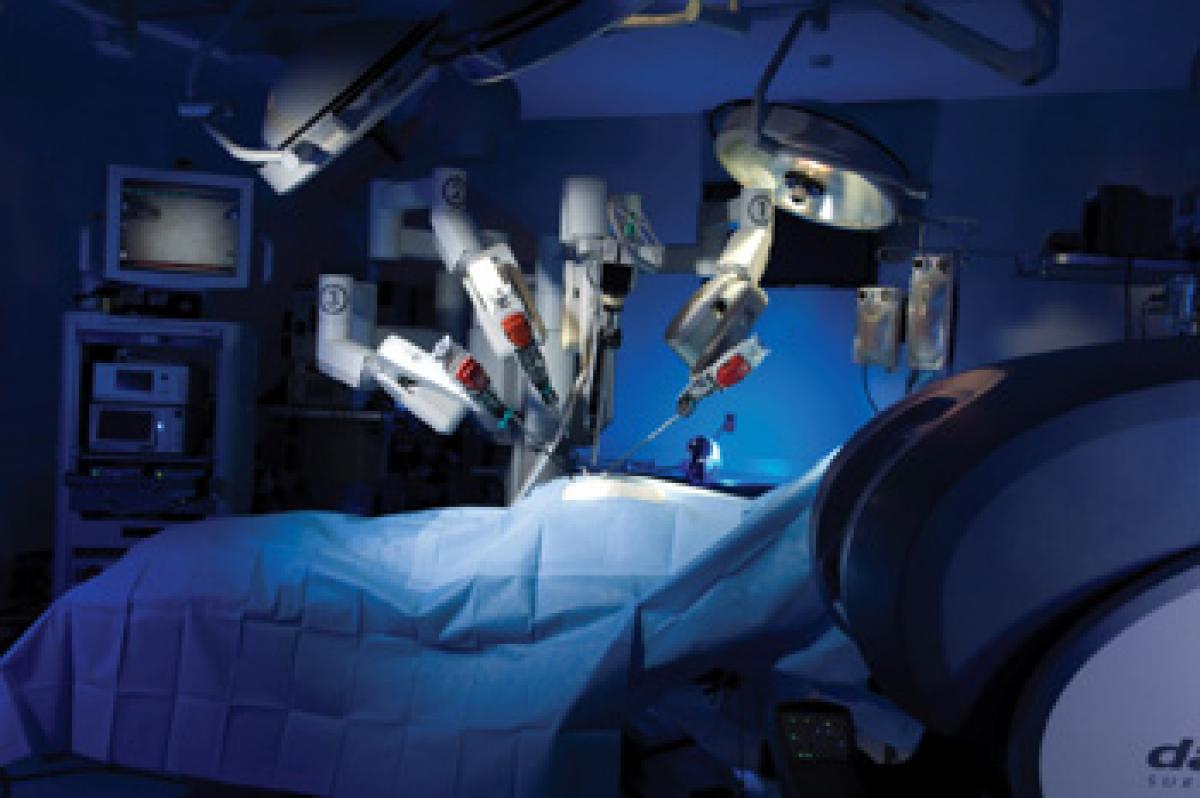Live
- G20 Leaders Will Talk About Climate, Taxes, and Trump's Return in Brazil
- COP29: CDRI announces $8 million funding for 12 projects to address climate crisis
- Anti-Telgu remarks: Actor Kasthuri Shankar moves court for bail
- Samsung AR Smart Glasses Set to Launch in 2025, Featuring Ray-Ban Meta-Like Design
- Kerala Industries Minister confident that new policy will boost plantation sector
- Madras HC plans inter-departmental monitoring committee to combat drug use in TN
- Bihar: Spotted deer dies due to heart attack in Banka district
- Mushtaq Ali T20: Shami to spearhead Bengal bowling attack, Gharami named captain
- Kharge's clarion call to oust Maharashtra's BJP-backed MahaYuti
- Why Ukraine’s Use of US Missiles Against Russia Could Lead to World War 3
Just In

Reasonable costs, less pain, early recovery and increasing awareness have put India on the global map when it comes to robot-assisted surgeries across the health spectrum and the country is poised to take a leap soon, some of the leading robotic surgeons have said.
Reasonable costs, less pain, early recovery and increasing awareness have put India on the global map when it comes to robot-assisted surgeries across the health spectrum and the country is poised to take a leap soon, some of the leading robotic surgeons have said.
According to the latest data from hospitals, Mumbai recorded over 70,000 robotic surgeries in 2015 -- mostly on patients from abroad. Delhi and Bengaluru have performed nearly 20,000 and 25,000 robotic surgeries, respectively.
More specifically, patients from the Middle East and Africa appear to be making a beeline for robot-assisted surgeries in India because either they do not have advance robotic surgery facilities in their home country or, if available, its very expensive.
"I get at least one to two inquiries for robotic surgeries every week. These inquiries are usually from the Middle East and Africa. In the last two months alone, I had operated on seven patients with prostate cancer from out of India," Dr Anup Ramani, consultant robotic and uro-oncological surgeon from Saifee Hospital and Breach Candy Hospital, Mumbai, told IANS.
Dr Ramani said that for early prostate cancer the best treatment is through robotic surgery. In India, prostate cancer has seen a sharp rise and it affects the rich and the poor alike. "It is very important for men to do a prostate specific antigen (PSA) test once a year after 50," Dr Ramani said.
In New Delhi, Dr Vipin Tyagi, consultant urologist and robotic surgeon in Sir Ganga Ram Hospital, successfully performed robotic surgery recently on a four-year-old girl suffering from congenital grade 5 bilateral Vesico Ureteric Reflux (VUR), a disease in which urine starts going back from bladder to kidneys.
"She was having high fever with recurrent urinary tract infection since birth and was brought to Sir Gangaram Hospital. Tests confirmed that she had VUR," Dr Tyagi said. The parents wanted to avoid any big incision in the little girl and it was not easy to do minimally-invasive surgery either.
"We decided to go in for robot-assisted bilateral ureteric reimplantation. The use of big robot, especially for VUR, is uncommon in children because it is difficult to get working space for the robotic arm inside the abdomen of a small child," the doctor said.
The team then decided to make certain modifications and improvisation for docking of the robotic arms in the way to get just sufficient working space for the procedure. The girl was back home after two days. Follow-up scans and reports showed the VUR had been cured.
"Robotic assistance provides incomparable 3D vision, better range of movements and it seems as if the surgeon has introduced his wrist inside the abdomen of the patients," Dr Tyagi explained.
According to Dr Meghal Sanghvi, oncologist at Wockhardt Hospital, the setup for robotic surgery is very important for all hospitals considering the rising demands for it in various parts including bypass surgery, transplants, cancer and gynae procedures.
"Apart from less time, robotic surgery also ensures there is no surgical error during the process," she noted. Further, the cost is only marginally higher than a normal procedure.
According to Dr Chris Holsinger, 48, who leads Stanford Cancer Centre's Head and Neck Oncology practice and has been interacting closely with leading Indian counterparts since 2008, India has significant talent and expertise in performing robot-assisted surgeries for head and neck patients.
"The use of computer-assisted surgery (via a surgical robot) to remove cancerous tissues or tumours in the head and neck areas helps the surgeon see the affected areas far more clearly - which is not possible in open surgery," Holsinger, who was recently in India to attend a seminar on head and neck cancer, told IANS.
The Stanford Medical Center is working with leading oncologists with Indian health care providers like Delhi's Rajiv Gandhi Cancer Institute and Research Centre (RGCIRC) and Mumbai's Tata Memorial Cancer Hospital for study of Human Papilloma Virus (HPV) patients.
Dr Surender Dabas from RGCIRC says the minimally invasive surgical procedure for head and neck area allows access to the robot through the mouth, thus reducing trauma, pain and blood loss. "Best of all, the procedure does not leave any scars on the face or neck and the recovery is much quicker," said Dr Dabas.

© 2024 Hyderabad Media House Limited/The Hans India. All rights reserved. Powered by hocalwire.com







